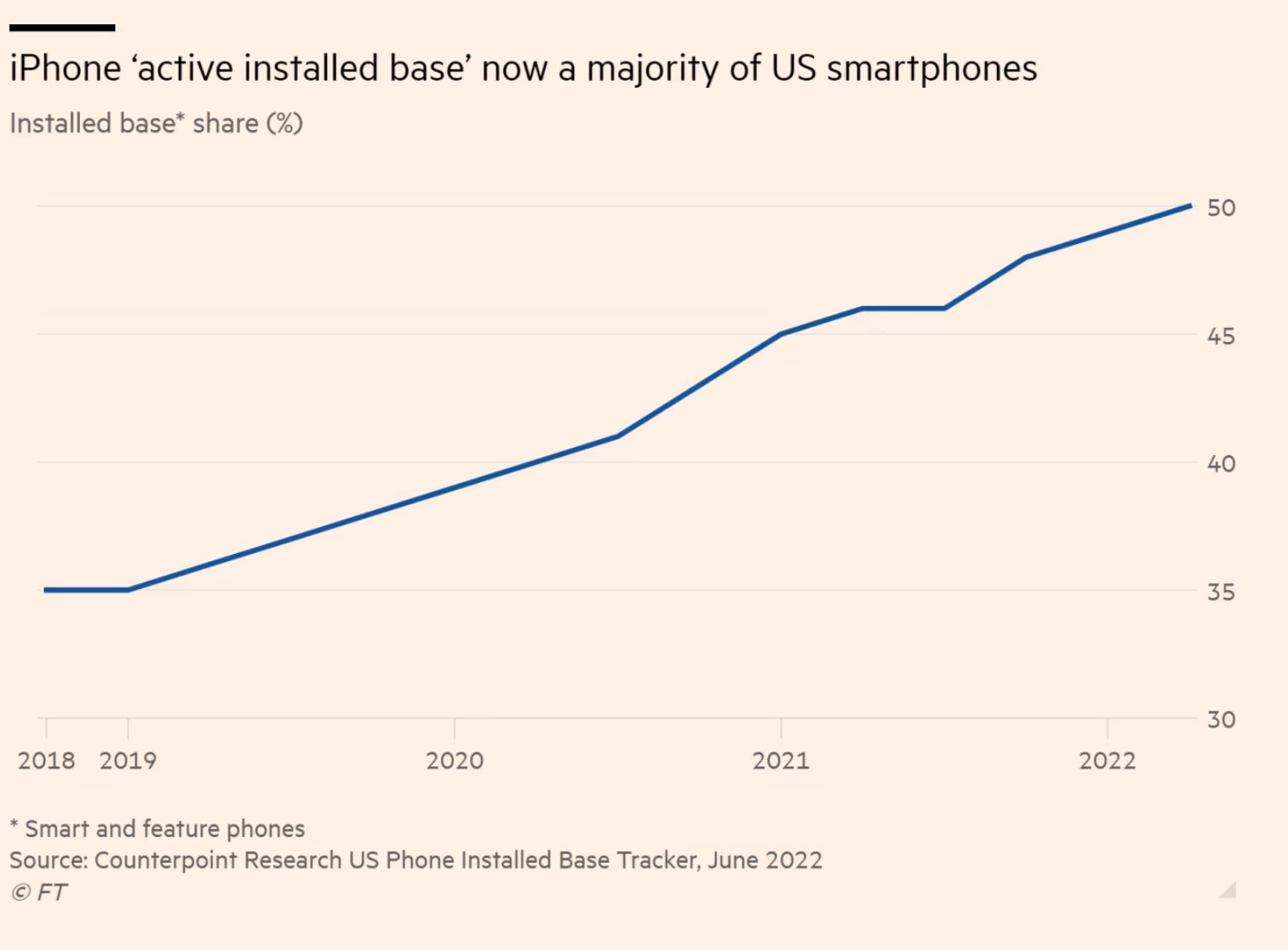Affiliate links on Android Authority may earn us a commission. Learn more.
iPhones overtake Android phones in the US for the first time ever

- According to Counterpoint, the iPhone now beats Android when it comes to the US market.
- The Apple iPhone install base accounts for 50% of the market when compared to smart and feature phones running Android.
- iPhone growth has skyrocketed since the launch of the iPhone 13.
For most of the long-running battle between Android and iOS, Android has remained superior when it comes to raw numbers. After all, there are more than two billion active Android devices around the world. Even here in the United States, Android reigned supreme.
That is, until now. According to data compiled by The Financial Times via Counterpoint Research, the iPhone beats Android in US numbers. For the first time ever, the iPhone’s active install base — i.e. the number of active devices — represents over 50% of the US market.
To make things even more serious, that’s not just compared to Android smartphones — Android feature phones are included as well.
You can see the chart below, which tells a whole bunch of stories.
iPhone beats Android: A painful chart
From 2018 to 2019, the iPhone active install base remained flat. It slowly (but very steadily) climbed through 2019 and into 2021. In the middle of 2021, it stalled for a bit, and then skyrocketed in the second half of the year. In 2022, it barely slowed.
One thing the chart makes abundantly clear is just how successful the iPhone 13 series has been with the US audience. The growth in 2021 was significant but stalled out in the summertime. As soon as the iPhone 13 series dropped, though, the numbers just piled in.
Keep in mind, that this chart doesn’t really say much about people who stayed with the iPhone. In other words, if someone owned an iPhone 12 and then upgraded to an iPhone 13, that wouldn’t cause a blip in the chart because the number of active iPhones would stay the same. This chart mostly represents people getting iPhones for the first time. You know what that means: most of those people likely switched from Android.
It’s clear Google and other Android OEMs are going to really need to step up if they don’t want to see this chart escalate any higher in 2023.
